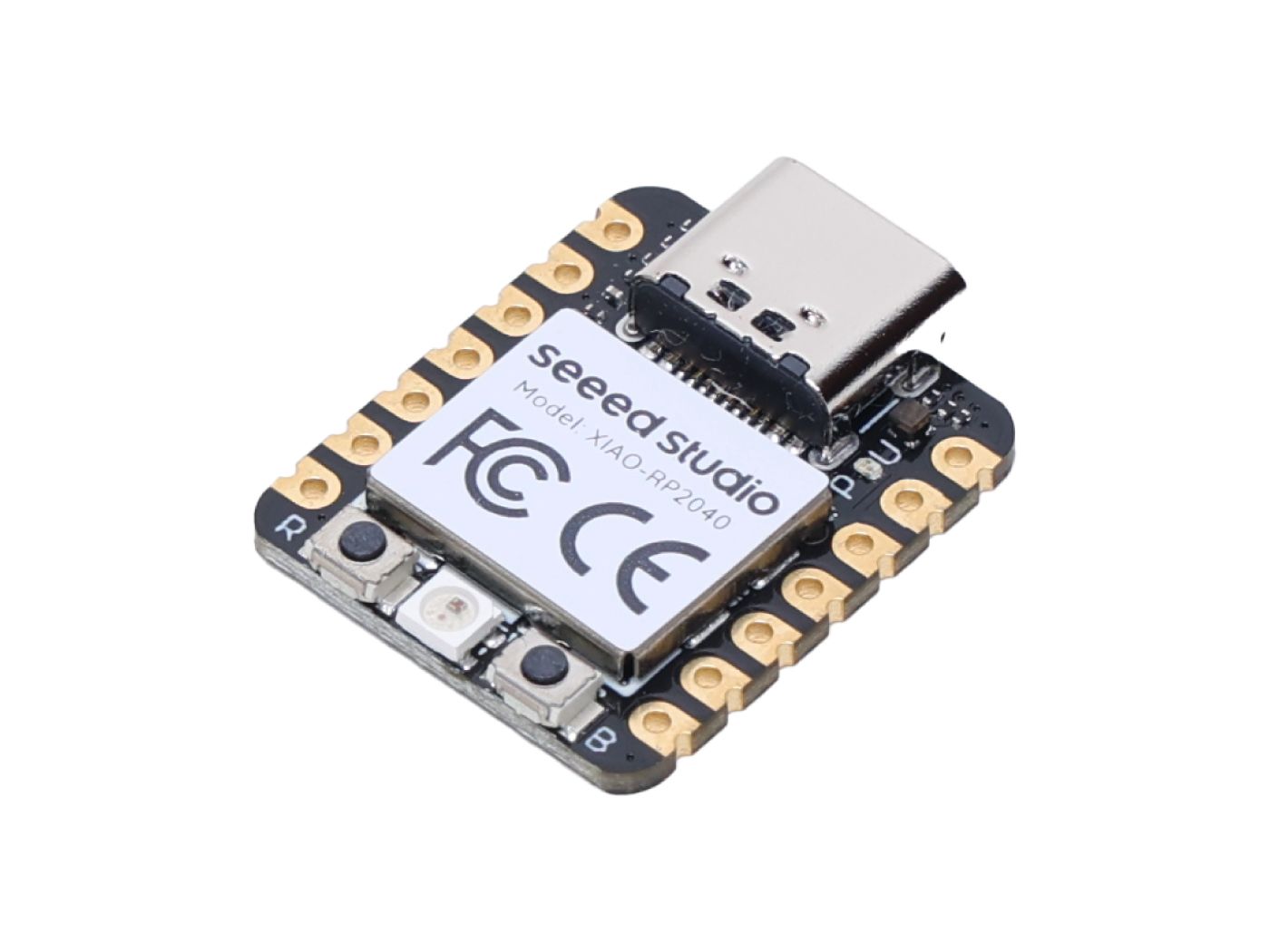Seeed Studio XIAO RP2040
The Seeed Studio Xiao RP2040 is a general purpose board supplied by Seeed Studio and it is compatible with the Raspberry Pi RP2040 ecosystem as they share the same RP2040 chip.

Features
RP2040 microcontroller chip
Dual-core ARM Cortex M0+ processor, flexible clock running up to 133 MHz
264KB of SRAM, and 2MB of onboard Flash memory
11 digital pins, 4 analog pins, 11 PWM Pins
1 I2C interface, 1 UART interface, 1 SPI interface, 1 SWD Bonding pad interface
USB Type-C interface
1 user LED, 1 power LED, two LEDs for serial port downloading, 1 RGB LED
1 RESET button, 1 BOOT button
LEDs
There are 2 LEDs available for user:
A RGB LED connected to GPIO16 (PIN_LED_G), GPIO17 (PIN_LED_R), GPIO25 (PIN_LED_B).
A NeoPixel RGB LED connected to GPIO11 (NEOPIXEL_POWER) and GPIO12 (PIN_NEOPIXEL).
Pin Mapping
Pads numbered anticlockwise from USB connector.
Pad |
Signal |
Notes |
|---|---|---|
0 |
GPI26 |
D0/A0 |
1 |
GPI27 |
D1/A1 |
2 |
GPI28 |
D2/A2 |
3 |
GPI29 |
D3/A3 |
4 |
GPIO6 |
D4/SDA |
5 |
GPIO7 |
D5/SCL |
6 |
GPIO0 |
Default TX for UART0 serial console |
7 |
GPIO1 |
Default RX for UART1 serial console/CSn |
8 |
GPIO2 |
D8/SCK |
9 |
GPIO3 |
D10/MOSI |
10 |
GPIO4 |
D9/MicroSD |
11 |
3V3 |
Power output to peripherals |
12 |
Ground |
|
13 |
VIN |
+5V Supply to board |
Power Supply
For general I/O pins:
Working voltage of MCU is 3.3V. Voltage input connected to general I/O pins may cause chip damage if it’ higher than 3.3V.
For power supply pins:
The built-in DC-DC converter circuit able to change 5V voltage into 3.3V allows to power the device with a 5V supply via VIN-PIN and via the USB connector.
Installation & Build
For instructions on how to to install the build dependencies and create a NuttX image for this board, consult the main RP2040 documentation.
Configurations
All configurations listed below can be configured using the following command in
the nuttx directory (again, consult the main RP2040 documentation):
$ ./tools/configure.sh seeed-xiao-rp2040:<configname>
nsh
Basic NuttShell configuration (console enabled in UART0, at 115200 bps).
userled
This is an nsh configuration with added support for user LEDs.
usbnsh
Basic NuttShell configuration using CDC/ACM serial (console enabled in USB Port, at 115200 bps).